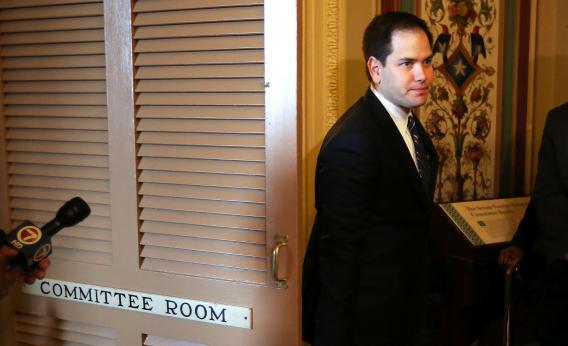One important reason that governments sometimes reduce their borrowing is that excessive public borrowing can “crowd out” private investment as the central bank raises interest rates to block inflation.
Marco Rubio seems to think that right now is such a time:
“The debt has a direct impact on unemployment. Ever dollar that is being lent to the government is a dollar that is not being invested in our economy,” he says. “The immediate danger of the debt, and the one that speaks to people in the real world, is the fact that the debt is contributing to the fact that they don’t have a good job.”
But how does he figure? As you can see, corporate borrowing costs are low and falling:
Mortgage interest rates are also low and falling:
And indeed federal government borrowing costs are also low and falling:
So, all told, it’s very hard to see what the crowding-out story is supposed to be here. The reasonable explanation for why nominal interest rates for government borrowing, corporate borrowing, and household borrowing are all moving in the same direction is that nominal growth expectations are low and this is also driving investment to a low level. Interestingly, if Rubio were to take a break from his appointed role as Obama-basher today, he might note that immigration reform to push the expected population growth rate upward would be a big help here. Accounts of the economic benefits of immigration typically focus on the static gains from more labor market efficiency, but in today’s investment-starved, zero-bound environment, the direct investment channel is also a big deal.
